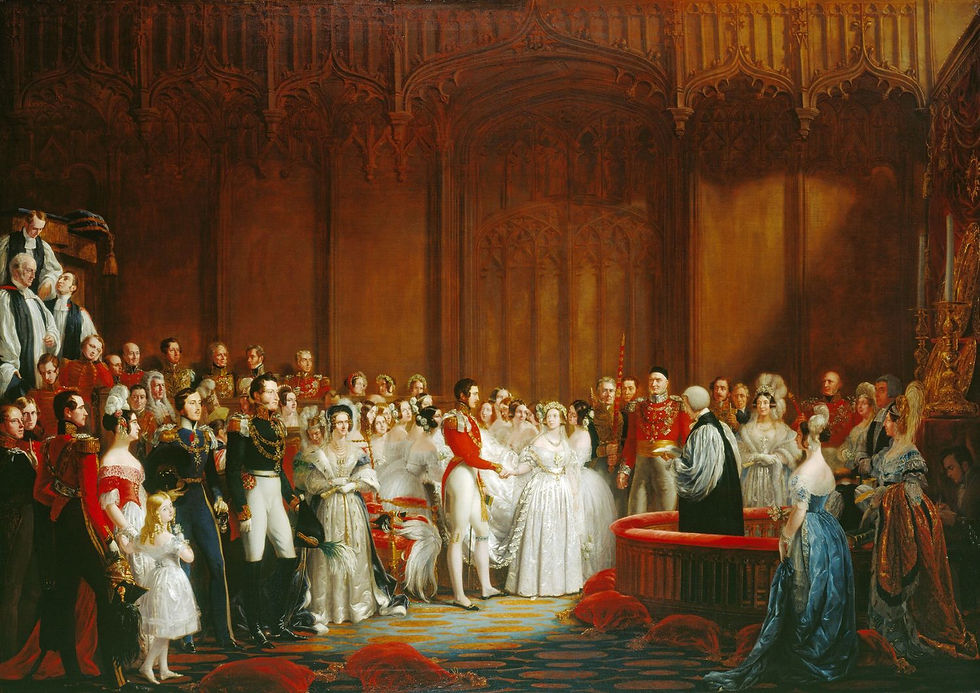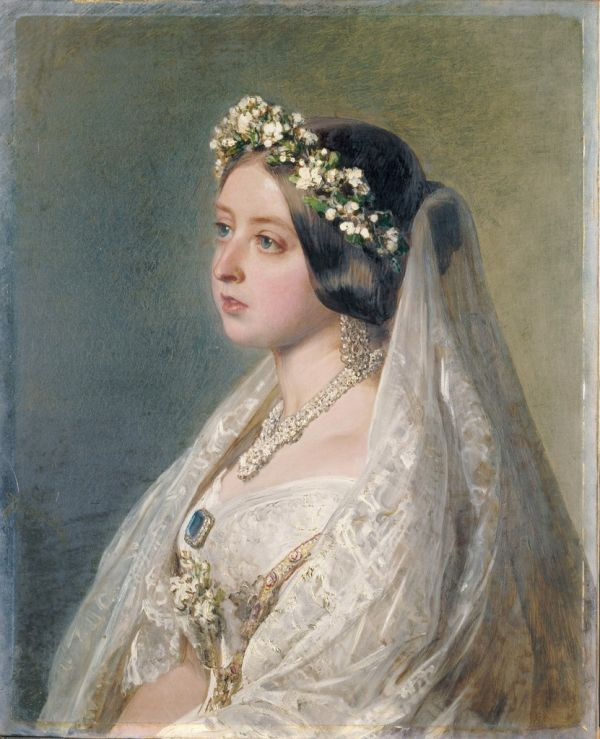Why is the Wedding Dress White? We owe it to Queen Victoria and Prince Albert’s Royal Wedding!
- Primavera Dreams

- May 5, 2017
- 2 min read

For centuries in Western cultures, wedding dresses were the best, nicest dresses a woman could afford. But they weren’t white, since in many cultures the color white symbolized mourning. In Ireland, wedding dresses were often of a green color; in many European countries and in Russia – of a bright red or orange. In France, lilac was a bride’s lucky color.
Despite a few examples of white wedding dresses being worn earlier, we attribute this modern tradition -- that is now popular in Europe, Australia, Canada, the US, and many countries in Latin America -- to Queen Victoria, who wore a white wedding dress on February 10, 1840, when she married Prince Albert in the Chapel Royal, St James’s Palace, in London. The dress was of a white Spitalfields silk, with elaborate lace made in Honiton. It was decorated with orange blossom flowers, and had a long train of 18 feet (5.5 m). The Queen wore a wreath of orange flowers, a Turkish diamond necklace and earrings, and a beautiful sapphire brooch given to her by Prince Albert on the day before the wedding. The train was held by 12 young girls, all dressed in white dresses and wearing white roses. The wedding was recorded by Sir George Hayter’s painting, commissioned by the Queen. The portrait allows us to see many great details of the dress. The extraordinarily fine wedding lace clearly set her dress (as well as dresses of future royal brides, who would emulate it) apart from the contemporary crowd.
Queen Victoria’s wedding appearance was later recorded by Franz Xaver Winterhalter, a German painter known for his portraits of royalty. The portrait was commissioned in 1947 as an anniversary gift for Prince Albert.
The wedding ceremony was described by the Queen as making “…an everlasting impression on everyone who promises at the Altar to keep what he or she promises…”
A historical curiosity: The Archbishop of Canterbury, who conducted the wedding service, had suggested that the Queen might wish to remove the word “obey” from her responses during the ceremony – but she requested to retain it.
The crowd greeting the bride and groom was immense, cheering loudly when they emerged from the Chapel and left for Buckingham Palace.
Only approved persons were able to watch the procession, and family members were issued with carriage passes for Buckingham Palace.
Widely discussed and described in newspapers, this wedding was one of the most popular topics in England and elsewhere, and the White Bridal Gown started its triumphant march across the Globe -- and continues ever since!






